介绍
ProtoBuf(protocol buffers) 是一种语言无关、平台无关、可扩展的序列化结构数据的方法,它可用于(数据)通信协议、数据存储等。,是一种灵活,高效,自动化机制的结构数据序列化方法比XML更小,更快,更为简单。
本项目主要是OpenHarmony系统下以 protobuf.js 5.0.3为主要依赖开发,主要接口针对OpenHarmony系统进行合理的适配研发。
下载安装
1.安装
2.在需要使用的页面导入protobuf
使用说明
protobuf支持的输入格式
1.proto格式字符串
2.proto文件映射的json字符串
3.proto文件
在resource->rawfile文件夹下按照 .proto文件格式定义消息体结构,如:userproto.proto文件。
4.json文件
在resource->rawfile文件夹下存放proto文件映射的json文件,参照第二点。
对象编解码
1.在resource->rawfile文件夹下按照 .proto文件格式定义消息体结构,如:userproto.proto文件。
2.读取.proto 文件
3.对象编码
4.对象解码
主要接口示例:
1.proto字符串编解码
2.json字符串编解码
3.同步方式进行proto文件编解码
4.异步方式进行proto文件编解码
接口说明
loadProto
static loadProto(proto:string,builder?:ProtoBuf.Builder|string|{root: string, file: string},filename?:string|{root: string, file: string}) :ProtoBuf.Builder;
加载proto格式字符串,进行内容解析,并返回协议消息体构建器。
参数:
|
参数名 |
类型 |
必填 |
说明 |
|
proto |
string |
是 |
proto格式的字符串。 |
|
builder |
Builder |string | {root: string, file: string} |
否 |
指定已有的协议消息体构建器,如果未指定将重新创建一个。 |
|
filename |
string | {root: string, file: string} |
否 |
如果知道对应的文件名称,必须为导入文件指定。 |
返回值:
|
类型 |
说明 |
|
Builder |
协议消息体构建器。 |
protoFromString
static protoFromString(proto:string,builder?:ProtoBuf.Builder|string|{root: string, file: string},filename?:string|{root: string, file: string}) :ProtoBuf.Builder;
loadProto方法的别名,加载proto格式字符串,进行内容解析,并返回协议消息体构建器。
参数
|
参数名 |
类型 |
必填 |
说明 |
|
proto |
string |
是 |
proto格式的字符串。 |
|
builder |
Builder |string | {root: string, file: string} |
否 |
指定已有的协议消息体构建器,如果未指定将重新创建一个。 |
|
filename |
string | {root: string, file: string} |
否 |
如果知道对应的文件名称,必须为导入文件指定。 |
返回值:
|
类型 |
说明 |
|
Builder |
协议消息体构建器。 |
loadProtoFile
static loadProtoFile(filename:string|{root: string, file: string}, callback?=(error?:Error,builder:Protobuf.Builder)=>void,builder?:Protobuf.Builder,resourceManager: @ohos.resourceManager.ResourceManager):ProtoBuf.Builder|undefined;
加载proto文件,进行内容解析,并返回协议消息体构建器。
|
参数名 |
类型 |
必填 |
说明 |
|
filename |
string | {root: string, file: string} |
是 |
原始文件的路径或指定’file’的对象,并为所有导入的文件覆盖’根’路径。 |
|
callback |
function |
否 |
成功时将接收’ null '作为第一个参数,并将Builder作为第二个参数,否则将Error作为第一个参数。如果省略,文件将被同步读取。 |
|
builder |
Builder |
否 |
指定已有的协议消息体构建器,如果未指定将重新创建一个。 |
|
resourceManager |
@ohos.resourceManager.ResourceManager |
是 |
访问应用资源的能力。 |
表1 callback的参数说明
|
参数名 |
类型 |
说明 |
|
error |
Error |
如果解析成功,此参数返回’null’,如果失败,返回对应Error。 |
|
builder |
Builder |
协议消息体构建器。 |
返回值:
|
类型 |
说明 |
|
Builder | null |
协议消息体构建器。 |
protoFromFile
static protoFromFile(filename:string|{root: string, file: string}, callback?=(error?:Error,builder:Protobuf.Builder)=>void,builder?:Protobuf.Builder,resourceManager: @ohos.resourceManager.ResourceManager):ProtoBuf.Builder|undefined;
loadProtoFile方法别名,加载proto文件,进行内容解析,并返回协议消息体构建器。
|
参数名 |
类型 |
必填 |
说明 |
|
filename |
string | {root: string, file: string} |
是 |
原始文件的路径或指定’file’的对象,并为所有导入的文件覆盖’根’路径。 |
|
callback |
function |
否 |
成功时将接收’ null '作为第一个参数,并将Builder作为第二个参数,否则将Error作为第一个参数。如果省略,文件将被同步读取。 |
|
builder |
Builder |
否 |
指定已有的协议消息体构建器,如果未指定将重新创建一个。 |
|
resourceManager |
@ohos.resourceManager.ResourceManager |
是 |
访问应用资源的能力。 |
表1 callback的参数说明
|
参数名 |
类型 |
说明 |
|
error |
Error |
如果解析成功,此参数返回’null’,如果失败,返回对应Error。 |
|
builder |
Builder |
协议消息体构建器。 |
返回值:
|
类型 |
说明 |
|
Builder | undefined |
协议消息体构建器。 |
loadJson
static loadJson(json:string|any, builder?:Protobuf.Builder|string| {root: string, file: string}, filename?: string| {root: string, file: string} ): ProtoBuf.Builder;
参数:
|
参数名 |
类型 |
必填 |
说明 |
|
json |
string | any |
是 |
proto格式的json字符串或者proto文件对应的json对象。 |
|
builder |
Builder |string | {root: string, file: string} |
否 |
指定已有的协议消息体构建器,如果未指定将重新创建一个。 |
|
filename |
string | {root: string, file: string} |
否 |
如果知道对应的文件名称,必须为导入文件指定。 |
返回值:
|
类型 |
说明 |
|
Builder |
协议消息体构建器。 |
loadJsonFile
static loadJsonFile(filename:string|{root: string, file: string}, callback?=(error?:Error,builder:Protobuf.Builder)=>void,builder?:Protobuf.Builder,resourceManager: @ohos.resourceManager.ResourceManager):ProtoBuf.Builder|undefined;
加载proto文件,进行内容解析,并返回协议消息体构建器。
|
参数名 |
类型 |
必填 |
说明 |
|
filename |
string | {root: string, file: string} |
是 |
原始文件的路径或指定’file’的对象,并为所有导入的文件覆盖’根’路径。 |
|
callback |
function |
否 |
成功时将接收’ null '作为第一个参数,并将Builder作为第二个参数,否则将Error作为第一个参数。如果省略,文件将被同步读取。 |
|
builder |
Builder |
否 |
指定已有的协议消息体构建器,如果未指定将重新创建一个。 |
|
resourceManager |
@ohos.resourceManager.ResourceManager |
是 |
访问应用资源的能力。 |
表1 callback的参数说明
|
参数名 |
类型 |
说明 |
|
error |
Error |
如果解析成功,此参数返回’null’,如果失败,返回对应Error。 |
|
builder |
Builder |
协议消息体构建器。 |
返回值:
|
类型 |
说明 |
|
Builder | undefined |
协议消息体构建器。 |
newBuilder
static newBuilder():Protobuf.Builder;
返回值:
|
类型 |
说明 |
|
Builder |
协议消息体构建器。 |
Util
以下接口在Util对象内,须通过Protobuf.Util方式调用。
fetch
static fetch(path:string, callback?:(content?:string)=> void):string|undefined.
获取文件内容,需要先设置资源文件读取对象ResourceManager。
参数:
|
参数名 |
类型 |
必填 |
说明 |
|
path |
string |
是 |
资源文件路径。 |
|
callback |
(content?:string)=> void |
否 |
回调接收资源的内容。如果省略,资源将被同步获取。如果请求失败,内容将为空。 |
返回值:
|
类型 |
说明 |
|
string | undefined |
资源文件内容。 |
toCamelCase
static toCamelCase(str:string):string;
用于将字符串转换为驼峰格式。
参数:
|
参数名 |
类型 |
必填 |
说明 |
|
str |
string |
是 |
将字符串转换为驼峰格式。 |
返回值:
|
类型 |
说明 |
|
string |
驼峰格式字符串。 |
Builder
构建协议消息体的构建器,提供构建协议消息的功能。
isMessage
static isMessage(def:Object):boolean;
用于判断指定对象是否为消息体。
参数:
|
参数名 |
类型 |
必填 |
说明 |
|
def |
Object |
是 |
判断指定对象是否为消息体。 |
返回值:
|
类型 |
说明 |
|
boolean |
指示对象是否为消息体。 |
isMessageField
static isMessageField(def:Object):boolean;
用于判断指定对象是否为消息体的字段。
参数:
|
参数名 |
类型 |
必填 |
说明 |
|
def |
Object |
是 |
判断指定对象是否为消息体的字段。 |
返回值:
|
类型 |
说明 |
|
boolean |
指示对象是否为消息体的字段。 |
isEnum
static isEnum(def:Object):boolean;
用于判断指定对象是否为枚举对象。
参数:
|
参数名 |
类型 |
必填 |
说明 |
|
def |
Object |
是 |
判断指定对象是否为枚举对象。 |
返回值:
|
类型 |
说明 |
|
boolean |
指示对象是否为枚举对象。 |
build
build(path?: string | string[]) : Protobuf.Builder.Message | Object;
用于构建协议,解析所有定义,返回构建的协议消息包。
参数:
|
参数名 |
类型 |
必填 |
说明 |
|
path |
string | string[] |
否 |
协议内包完整路径。 |
返回值:
|
类型 |
说明 |
|
Protobuf.Builder.Message | Object |
协议消息包。 |
lookup
lookup(path?: string, excludeNonNamespace?: boolean) : ProtoBuf.Reflect.T;
用于构建协议消息包。
参数:
|
参数名 |
类型 |
必填 |
说明 |
|
path |
string |
否 |
协议内包完整路径。 |
|
excludeNonNamespace |
boolean |
否 |
排除非命名空间类型,如fields,默认为false。 |
返回值:
|
类型 |
说明 |
|
ProtoBuf.Reflect.T |
反射的描述。 |
Message
提供协议消息体的编解码方法。
constructor
new Message(values:Object);
构建消息体实例。
|
参数名 |
类型 |
必填 |
说明 |
|
values |
Object |
是 |
符合协议消息体结构的数据对象。 |
encode
static encode(data: Object, buffer?: ByteBuffer | boolean, noVerify?: boolean):ByteBuffer;
将协议消息体编码为ByteBuffer格式。
参数:
|
参数名 |
类型 |
必填 |
说明 |
|
data |
string |
是 |
消息体对应的数据。 |
|
buffer |
boolean |
否 |
指定编解码结果的ByteBuffer对象,如果未指定,将创建一个新的。 |
|
noVerify |
boolean |
否 |
是否不验证字段值,默认为false。 |
返回值:
|
类型 |
说明 |
|
ByteBuffer |
协议消息体数据编码后的ByteBuffer数据。 |
encode
encode(buffer?: ByteBuffer| boolean, noVerify?: boolean): ByteBuffer;
将消息编码为ByteBuffer格式数据。
参数:
|
参数名 |
类型 |
必填 |
说明 |
|
buffer |
string |
是 |
指定编解码结果的ByteBuffer对象,如果未指定,将创建一个新的。 |
|
noVerify |
boolean |
否 |
是否不验证字段值,默认为false。 |
返回值:
|
类型 |
说明 |
|
ByteBuffer |
协议消息体数据编码后的ByteBuffer数据。 |
encodeAB
encodeAB():ArrayBuffer;
将消息编码为ArrayBuffer格式。
返回值:
|
类型 |
说明 |
|
ArrayBuffer |
协议消息体数据编码后的ArrayBuffer数据。 |
toArrayBuffer
toArrayBuffer():ArrayBuffer;
encodeAB方法的别名,用于将消息编码为ArrayBuffer格式。
返回值:
|
类型 |
说明 |
|
ArrayBuffer |
协议消息体数据编码后的ArrayBuffer数据。 |
calculate
calculate(): Number;
计算消息体长度。
返回值:
|
类型 |
说明 |
|
Number |
协议消息体的长度。 |
encodeDelimited
encodeDelimited(buffer?: ByteBuffer| boolean, noVerify?: boolean): ByteBuffer;
将消息编码为ByteBuffer格式数据。
参数:
|
参数名 |
类型 |
必填 |
说明 |
|
buffer |
string |
是 |
指定编解码结果的ByteBuffer对象,如果未指定,将创建一个新的。 |
|
noVerify |
boolean |
否 |
是否不验证字段值,默认为false。 |
返回值:
|
类型 |
说明 |
|
ByteBuffer |
协议消息体数据编码后的ByteBuffer数据。 |
encode64
encode64(): string;
将消息编码为base64编码的字符串。
返回值:
|
类型 |
说明 |
|
string |
将消息编码为base64编码的字符串。 |
toBase64
toBase64(): string;
encode64方法的别名,将消息编码为base64编码的字符串。
返回值:
|
类型 |
说明 |
|
string |
将消息编码为base64编码的字符串。 |
encodeHex
encodeHex(): string;
将消息编码为十六进制编码的字符串。
返回值:
|
类型 |
说明 |
|
string |
将消息编码为十六进制编码的字符串。 |
toHex
toHex(): string;
encodeHex方法的别名,将消息编码为十六进制编码的字符串。
返回值:
|
类型 |
说明 |
|
string |
将消息编码为十六机制编码的字符串。 |
encodeJson
encodeJson(): string;
将消息编码为Json字符串。
返回值:
|
类型 |
说明 |
|
string |
将消息编码为Json字符串。 |
toRaw
toRaw(binaryAsBase64?:boolean, longsAsStrings:boolean):Object;
返回消息的原始负载。
参数:
|
参数名 |
类型 |
必填 |
说明 |
|
databinaryAsBase64 |
boolean |
否 |
指示是否包含二进制数据作为base64字符串而不是缓冲区,默认为false。 |
|
longsAsStrings |
boolean |
是 |
指示是否将long编码为字符串。 |
返回值:
|
类型 |
说明 |
|
Object |
返回消息的原始负载。 |
decode
static decode(data: ByteBuffer|ArrayBuffer|Buffer|string, length?: Number| string, enc?: string):Protobuf.Builder.Message;
从指定的缓冲区或字符串解码消息。
参数:
|
参数名 |
类型 |
必填 |
说明 |
|
data |
ByteBuffer | ArrayBuffer | Buffer | string |
是 |
要解码的数据。 |
|
length |
Number | string |
否 |
消息体长度,默认解码所有数据。 |
|
enc |
string |
否 |
如果缓冲区是字符串,将进行编码,支持hex,base64,utf8(不推荐),默认为base64 |
返回值:
|
类型 |
说明 |
|
Protobuf.Builder.Message |
从指定的缓冲区或字符串解码消息。 |
decode64
static decode64(str:string):Protobuf.Builder.Message;
从指定的base64编码字符串解码消息。
参数:
|
参数名 |
类型 |
必填 |
说明 |
|
str |
string |
是 |
要解码的base64编码字符串数据。 |
返回值:
|
类型 |
说明 |
|
Protobuf.Builder.Message |
从指定的base64编码字符串解码消息。 |
decodeHex
static decodeHex(str:string):Protobuf.Builder.Message;
从指定的十六进制编码字符串解码消息。
参数:
|
参数名 |
类型 |
必填 |
说明 |
|
str |
string |
是 |
要解码的十六进制编码字符串数据。 |
返回值:
|
类型 |
说明 |
|
Protobuf.Builder.Message |
从指定的十六进制编码字符串解码消息。 |
decodeJson
static decodeJson(str:string):Protobuf.Builder.Message;
从JSON字符串解码消息。
参数:
|
参数名 |
类型 |
必填 |
说明 |
|
str |
string |
是 |
从JSON字符串解码消息。 |
返回值:
|
类型 |
说明 |
|
Protobuf.Builder.Message |
从JSON字符串解码消息。 |
decodeDelimited
static decodeDelimited(buffer: ByteBuffer | ArrayBuffer | Buffer | string, enc?: string):Protobuf.Builder.Message;
从指定的缓冲区或字符串解码以长度分隔的varint32消息。
参数:
|
参数名 |
类型 |
必填 |
说明 |
|
buffer |
ByteBuffer | ArrayBuffer | Buffer | string |
是 |
指定的缓冲区或字符串。 |
|
enc |
string |
否 |
如果缓冲区是字符串,将进行编码,支持hex,base64,utf8(不推荐),默认为base64。 |
返回值:
|
类型 |
说明 |
|
Protobuf.Builder.Message |
从指定的缓冲区或字符串解码以长度分隔的varint32消息。 |
约束与限制
在下述版本验证通过:
- DevEco Studio: 4.0 (4.0.3.512), SDK: API10 (4.0.10.9)
- DevEco Studio: 4.0 Release(4.0.3.413), SDK: API10 (4.0.10.3)
目录结构
经常有很多小伙伴抱怨说:不知道学习鸿蒙开发哪些技术?不知道需要重点掌握哪些鸿蒙应用开发知识点?
为了能够帮助到大家能够有规划的学习,这里特别整理了一套纯血版鸿蒙(HarmonyOS Next)全栈开发技术的学习路线,包含了鸿蒙开发必掌握的核心知识要点,内容有(ArkTS、ArkUI开发组件、Stage模型、多端部署、分布式应用开发、WebGL、元服务、OpenHarmony多媒体技术、Napi组件、OpenHarmony内核、OpenHarmony驱动开发、系统定制移植等等)鸿蒙(HarmonyOS NEXT)技术知识点。
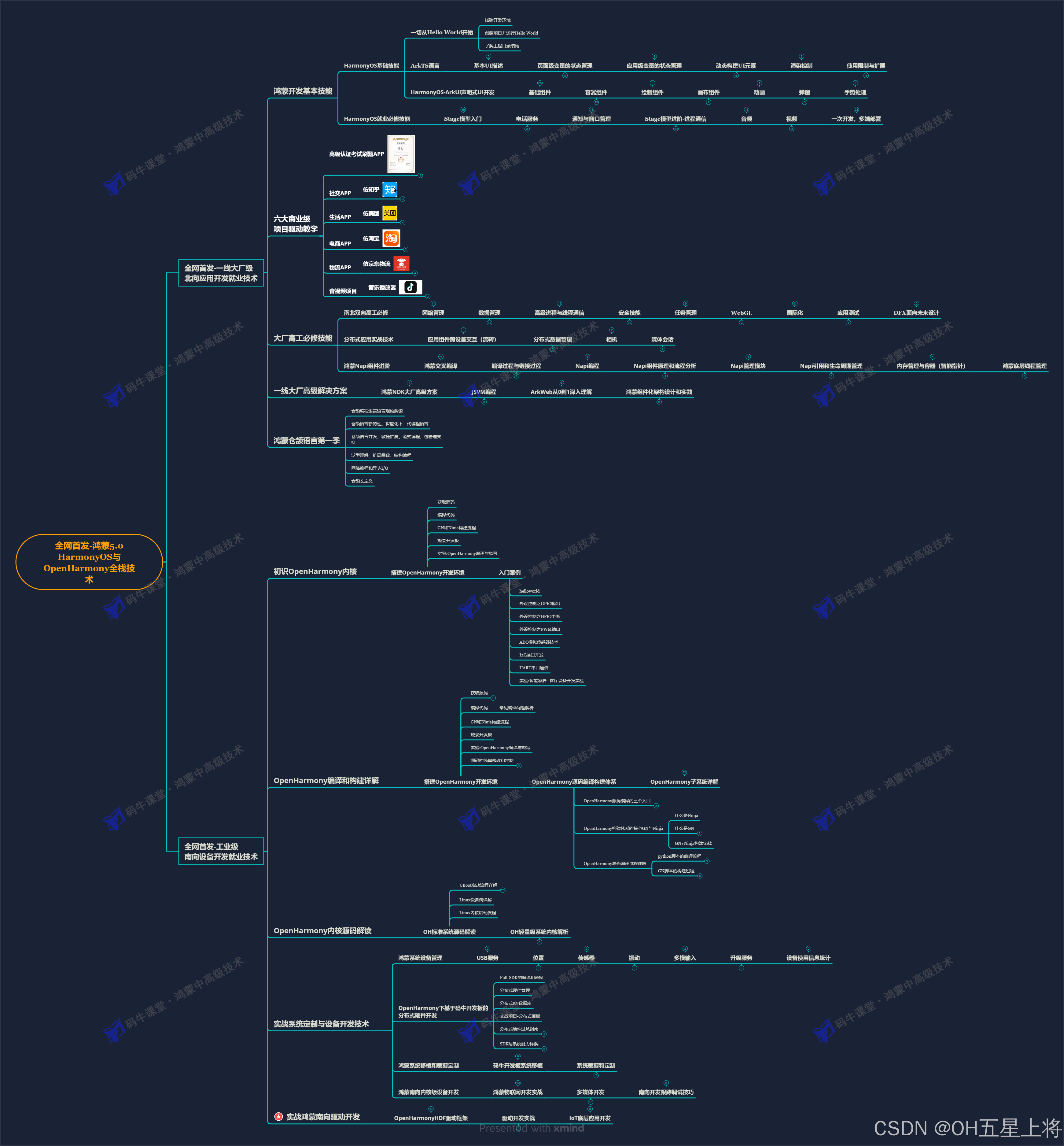
《鸿蒙 (Harmony OS)开发学习手册》(共计892页)
如何快速入门?
1.基本概念
2.构建第一个ArkTS应用
3.……
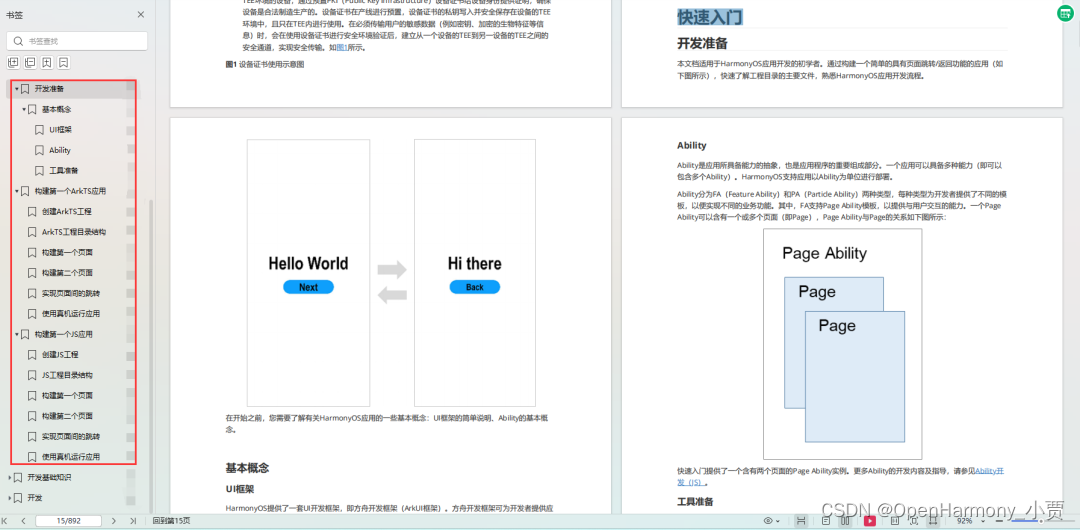
1.应用基础知识
2.配置文件
3.应用数据管理
4.应用安全管理
5.应用隐私保护
6.三方应用调用管控机制
7.资源分类与访问
8.学习ArkTS语言
9.……
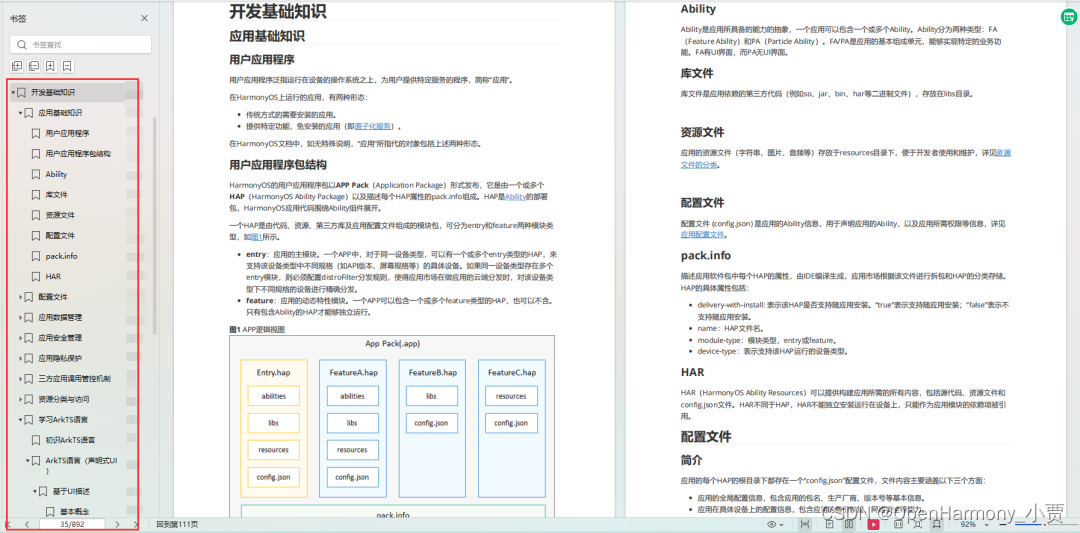
基于ArkTS 开发
1.Ability开发
2.UI开发
3.公共事件与通知
4.窗口管理
5.媒体
6.安全
7.网络与链接
8.电话服务
9.数据管理
10.后台任务(Background Task)管理
11.设备管理
12.设备使用信息统计
13.DFX
14.国际化开发
15.折叠屏系列
16.……
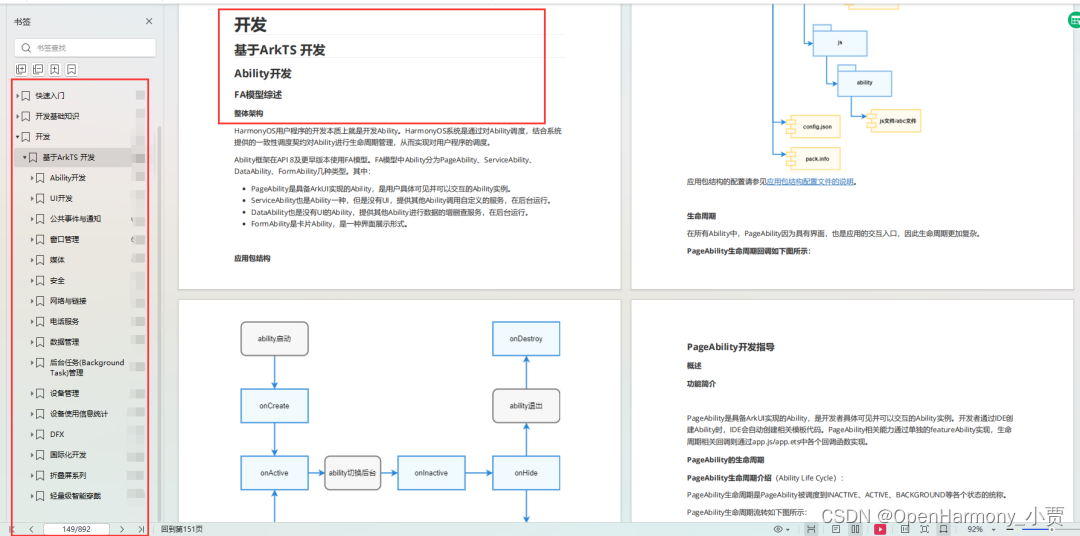
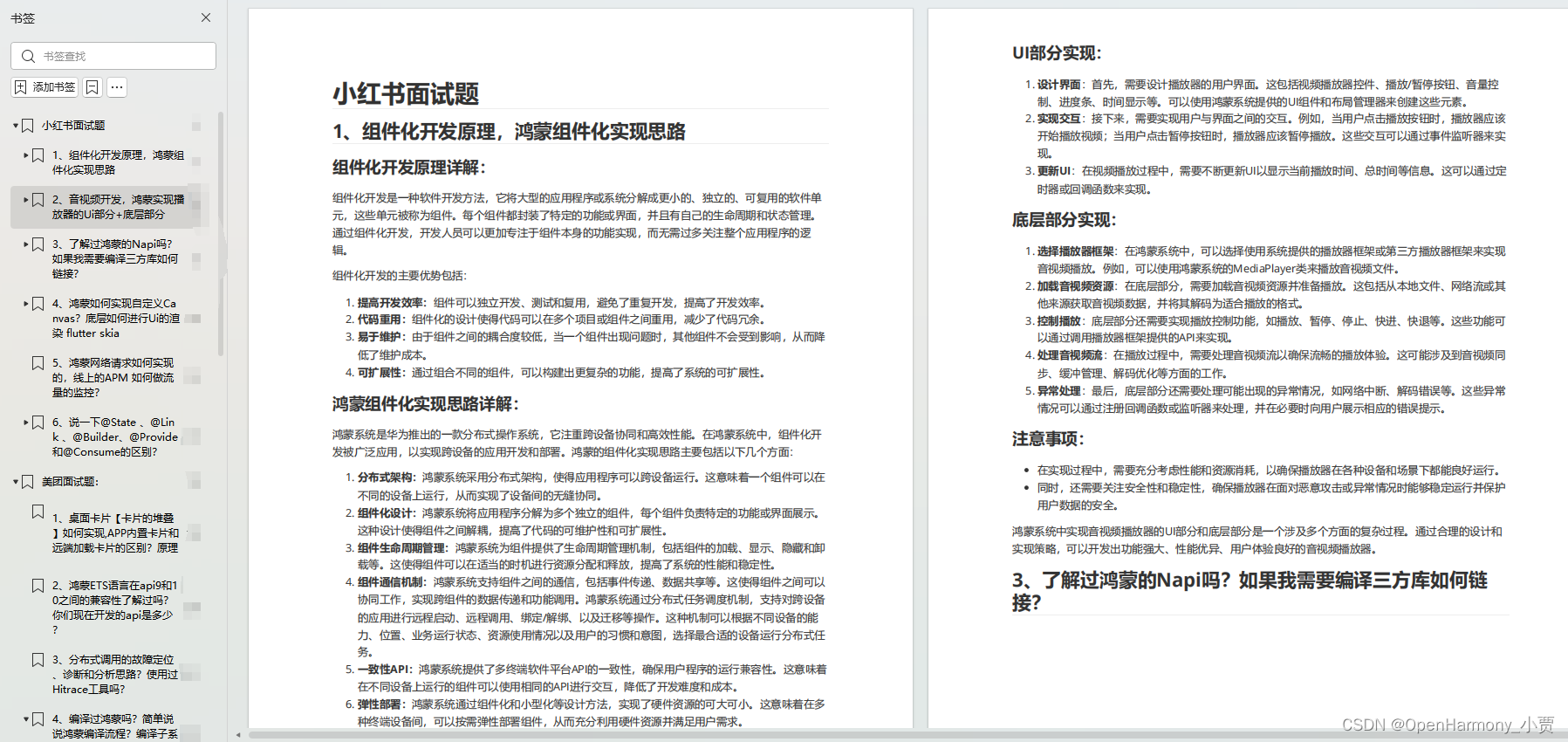
OpenHarmony 开发环境搭建
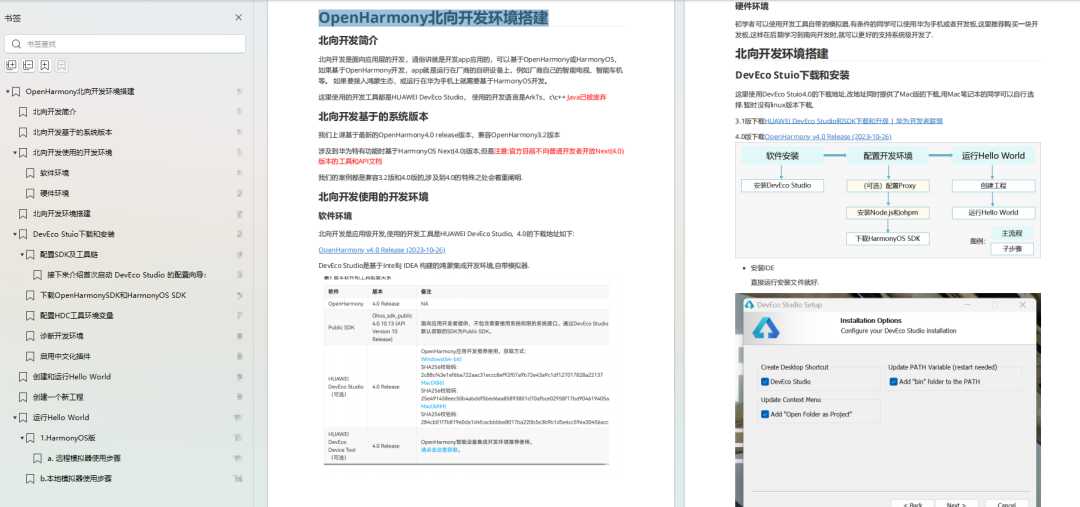
《OpenHarmony源码解析》
- 搭建开发环境
- Windows 开发环境的搭建
- Ubuntu 开发环境搭建
- Linux 与 Windows 之间的文件共享
- ……
- 系统架构分析
- 构建子系统
- 启动流程
- 子系统
- 分布式任务调度子系统
- 分布式通信子系统
- 驱动子系统
- ……
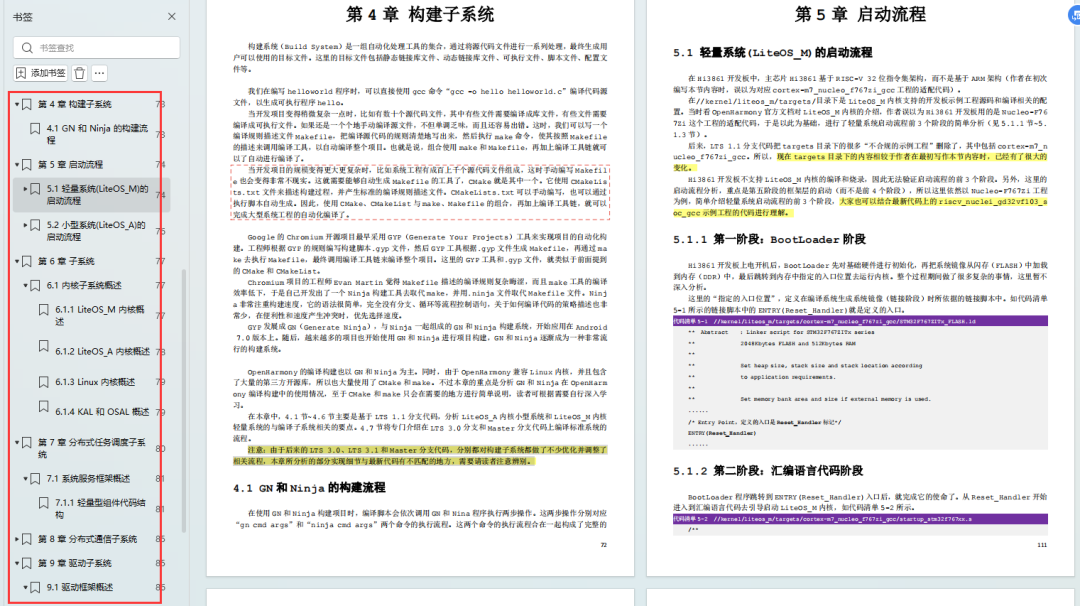
OpenHarmony 设备开发学习手册
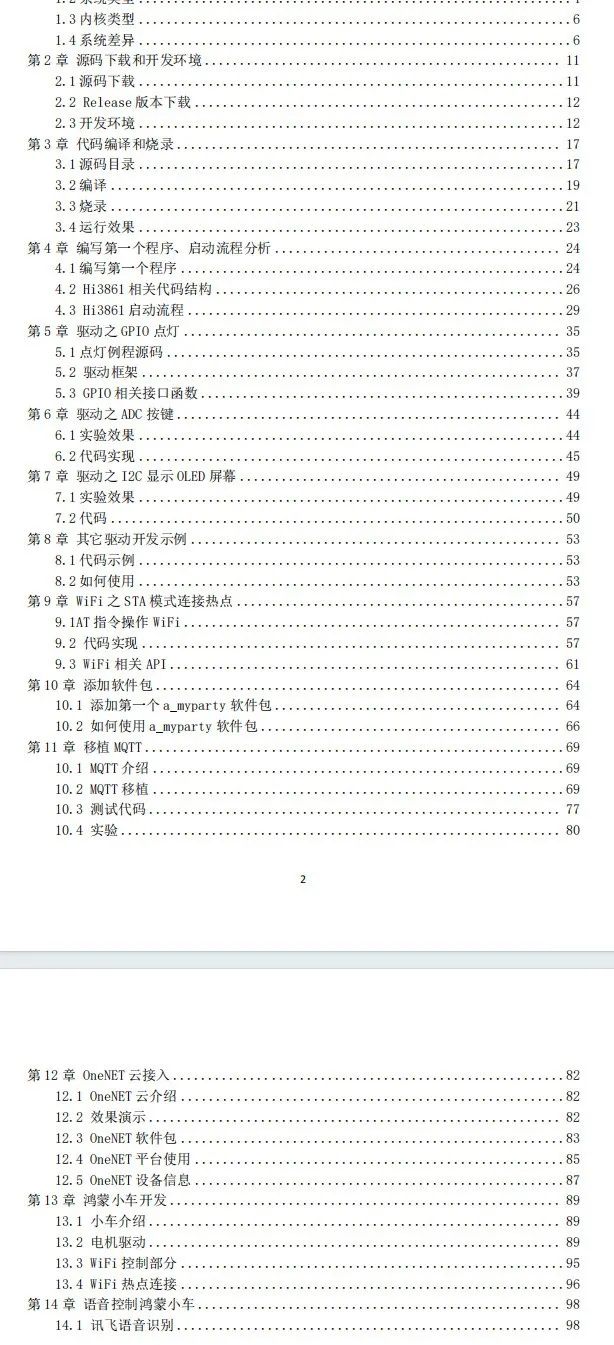








 已为社区贡献1条内容
已为社区贡献1条内容

所有评论(0)